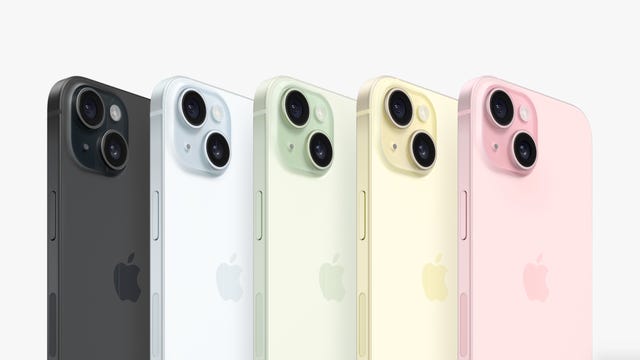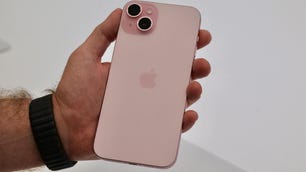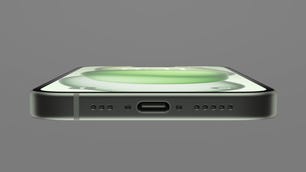Technologies
Is the Apple iPhone 15 Pro Worth it Compared to iPhone 15? Here’s Our Take
Beyond the camera, here’s what each phone offers.
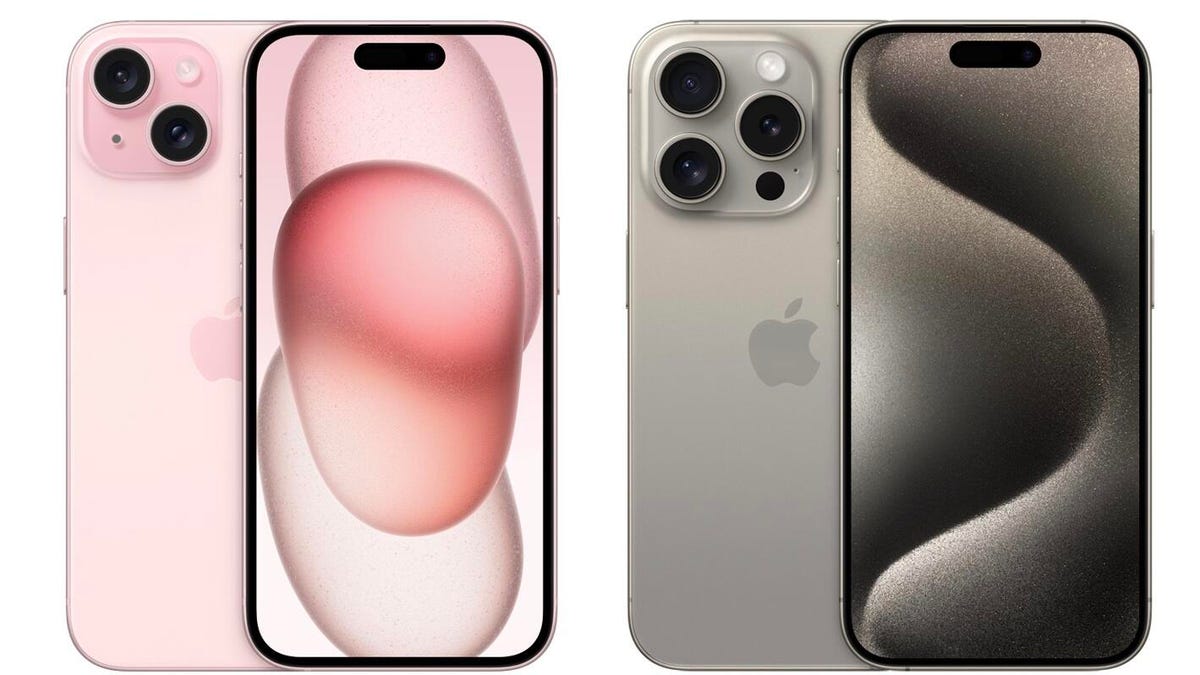
On Tuesday at its «Wonderlust» event, Apple unveiled the latest batch of iPhones alongside updates to the Apple Watch. The iPhone 15 and iPhone 15 Pro are here, and you may soon be facing a decision whether to shell out the extra money for a Pro model when the phones hit stores on Sept. 22.
On last year’s models, the new Dynamic Island was the main differentiator between the iPhone 14 and 14 Pro, but this feature has now trickled down to the regular iPhone 15, leaving the entire iPhone 15 line notchless. Still, there are important differences to consider when deciding between the iPhone 15 and 15 Pro. Bear in mind we’re yet to review the new iPhones, so this analysis is based on our hands-on impressions and their specs — let’s get to it.
More from the Apple event
iPhone 15 vs. 15 Pro: Display and enclosure
Both the iPhone 15 and iPhone 15 Pro feature the same size screen — a 6.1-inch Super Retina XDR display with a 2,556×1,179-pixel resolution. The Pro’s display, however, features ProMotion technology, which is Apple’s way of saying it has a variable refresh rate between 10Hz and 120Hz. It should result in smoother motion in videos, games and just scrolling through web pages compared with the fixed 60Hz refresh rate of the iPhone 15. When you aren’t watching YouTube or gaming on your phone, the Pro will lower the refresh rate to conserve battery life.
The iPhone 15 Pro also has an always-on display that keeps it on and dimmed when charging so you can use StandBy mode. You don’t get an always-on display with the iPhone 15.
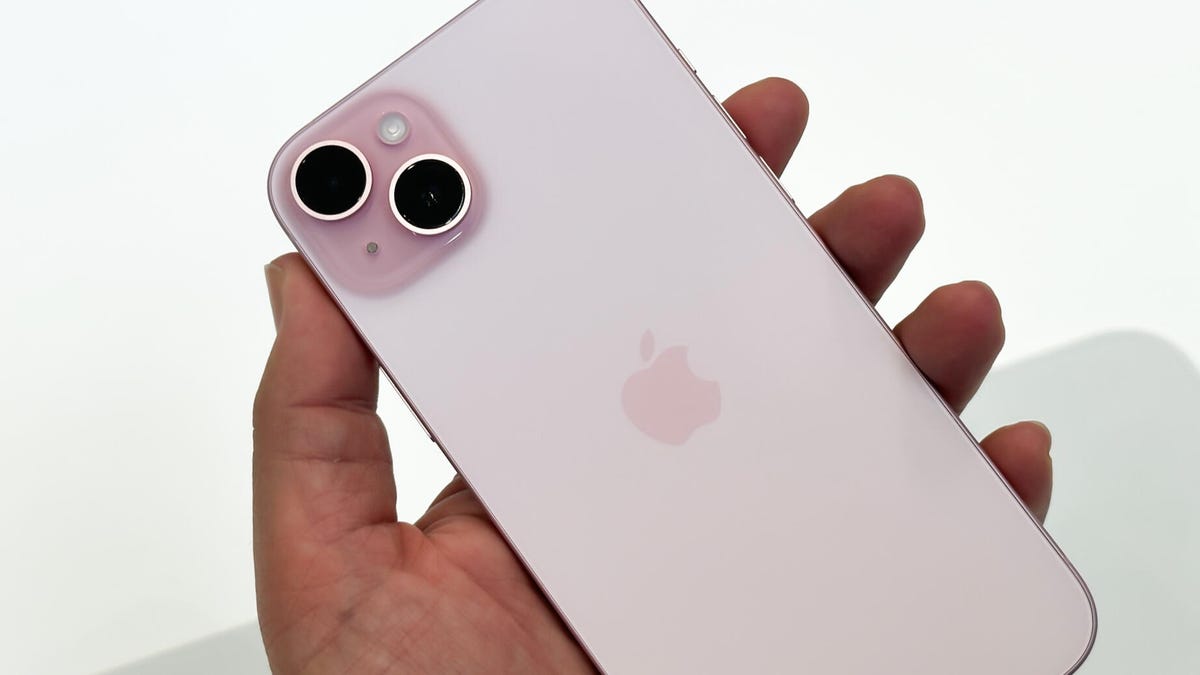
The iPhone 15 and 15 Pro are made from different materials. The iPhone 15 has an aluminum enclosure with a color-infused glass back, and the iPhone 15 Pro is made from titanium with a textured matte glass back.
More colorful options are available for the iPhone 15, where you can get it in pink, soft yellow, light green, pale blue or black. The iPhone 15 Pro is available in more staid hues: black, white, dark blue and natural titanium that looks beige.

In terms of overall size, the iPhone 15 is ever-so-slightly larger but lighter than the iPhone 15 Pro. Titanium is lighter than aluminum, but the iPhone 15 Pro weighs more than the iPhone 15, in large part because it has a third camera. The iPhone 15 weighs 6.02 ounces (171 grams), and the iPhone 15 Pro weighs 6.6 ounces (187 grams). The iPhone 15 Pro has ultrathin bezels and shaves a millimeter off the width and height of the iPhone 15’s dimensions while also being a fraction of a millimeter thinner.
One last difference between the two enclosures is the introduction of the Action button on the iPhone 15 Pro. It replaces the mute switch that’s still on the side of the iPhone 15. By default, a long press on the Action button will mute and unmute, but you can customize it to trigger a number of shortcuts like turning on the flashlight, recording a voice memo or opening the camera app and snapping a photo.

iPhone 15 vs. 15 Pro: Cameras
As with previous iPhone lines, the iPhone 15 features two cameras on the back, and the iPhone 15 Pro has three. You get a 48-megapixel wide lens and a 12-megapixel ultrawide lens with either model, and the iPhone 15 Pro adds a 12-megapixel telephoto lens that has a 3x optical zoom that lets you get closer to your subject.
Both models support night mode, but only the iPhone 15 Pro lets you take night mode shots in portrait mode.
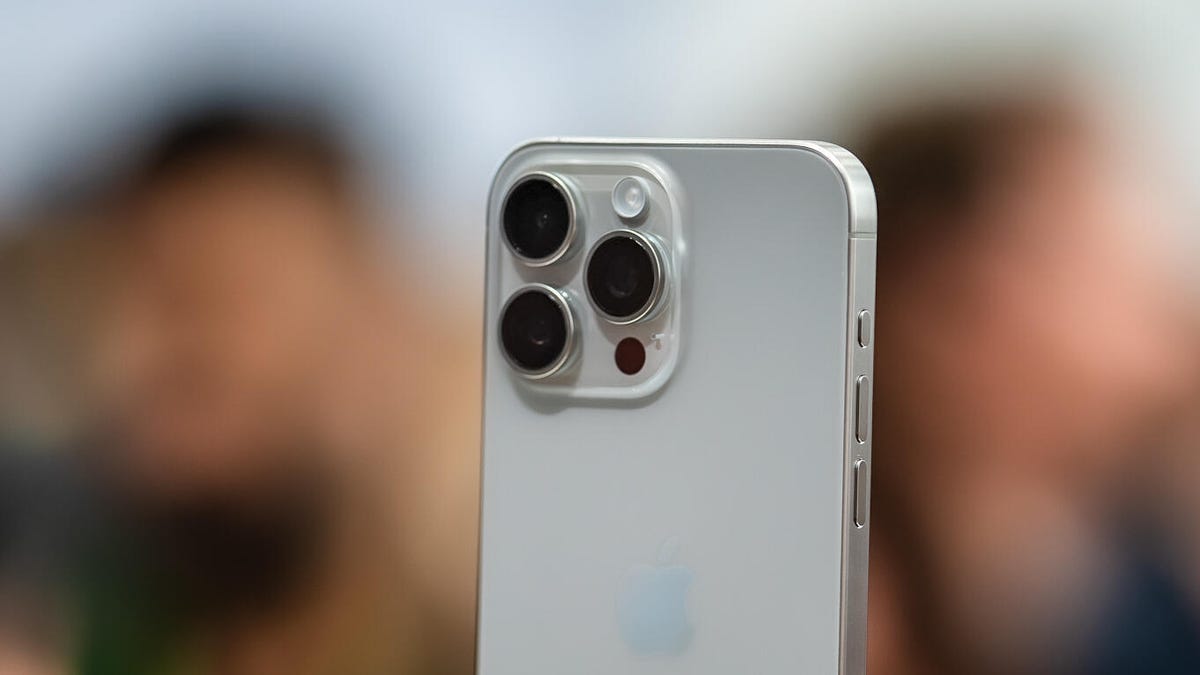
iPhone 15 vs. 15 Pro: Components
Inside, the iPhone 15 has an A16 Bionic chip, while the iPhone 15 Pro has an A17 Pro chip. Both models ought to be plenty fast; each processor is a six-core CPU with two performance and four efficiency cores. The iPhone 15 Pro is better suited for graphics and gaming; the A17 Pro Bionic processor has a six-core GPU to the A16 Bionic’s five-core GPU.
Both models are available in 128GB, 256GB and 512GB capacities, and the iPhone 15 Pro offers a 1TB option.
iPhone 15 vs. 15 Pro: USB-C speeds
The new models introduce USB-C charging, but only the iPhone 15 Pro supports the faster 10Gbps speeds of USB 3. You’ll need to supply your own USB-C 3 cable for a 15 Pro since Apple ships a USB 2 cable with both phones, but the iPhone 15 supports only USB 2 speeds of 480Mbps.
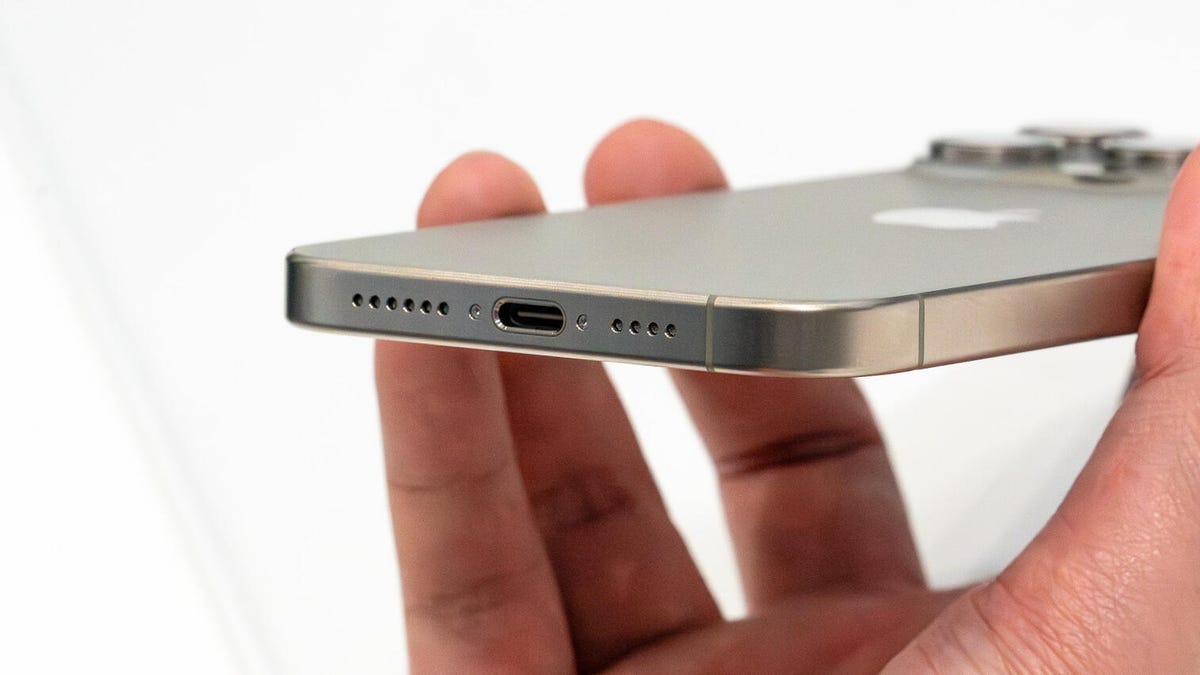
iPhone 15 vs. 15 Pro: Price
Finally, we arrive at the difference in price. No surprises here: As in past years, Apple charges an extra $200 for the iPhone 15 Pro compared with the iPhone 15. The iPhone 15 starts at $799 (£799, AU$1,499), while the iPhone 15 Pro starts at $999 (£999, AU$1,849).
Apple iPhone 15 vs. Apple iPhone 15 Pro
| iPhone 15 | iPhone 15 Pro | |
|---|---|---|
| Display size, tech, resolution, refresh rate, brightness | 6.1-inch OLED; 2,556×1,179 pixels; 60Hz refresh rate; 1,000 nits | 6.1-inch OLED; 2,556×1,179 pixels; 120Hz adaptive refresh rate; 1,000 nits |
| Pixel density | 460 ppi | 460 ppi |
| Enclosure material | Aluminum with color-infused glass back | Titanium with textured matte glass back |
| Dimensions (inches) | 2.82 x 5.81 x 0.31 in. | 2.78 x 5.77 x 0.32 in. |
| Dimensions (millimeters) | 71.6 x 147.6 x 7.8 mm | 70.6 x 146.6 x 8.25 mm |
| Weight (grams, ounces) | 171 g (6.02 oz) | 187 g (6.6 oz) |
| Mobile software | iOS 17 | iOS 17 |
| Camera | 48-megapixel (wide), 12-megapixel (ultrawide) | 48-megapixel (wide), 12-megapixel (ultrawide), 12-megapixel telephoto (3x optical) |
| Front-facing camera | 12-megapixel | 12-megapixel |
| Video capture | 4K | 4K |
| Processor | A16 Bionic | A17 Pro |
| RAM/storage | 128GB, 256GB, 512GB | 128GB, 256GB, 512GB, 1TB |
| Expandable storage | None | None |
| Battery/charging speeds | Undisclosed; Apple claims up to 20 hours of video playback (16 hours streamed) | Undisclosed; Apple claims up to 23 hours of video playback (20 hours streamed) |
| Fingerprint sensor | None (Face ID) | None (Face ID) |
| Connector | USB-C (USB 2.0) | USB-C (USB 3.0) |
| Side button/switch | Mute switch | Action button |
| Headphone jack | None | None |
| Special features | 5G (mmw/Sub6), IP68 rating, MagSafe (up to 15W), Qi wireless charging to 7.5W, Dynamic Island | 5G (mmw/Sub6), IP68 rating, MagSafe (up to 15W), Qi wireless charging to 7.5W, Dynamic Island, 3x optical zoom |
| US price off-contract | $799 (128GB), $899 (256GB), $1,099 (512GB) | $999 (128GB, $1,099 (256GB), $1,299 (512GB), $1,499 (1TB) |
| UK price | £799 (128GB), £899 (256GB), £1,099 (512GB) | £999 (128GB), £1,099 (256GB), £1,299 (512GB), £1,499 (1TB) |
| Australia price | AU$1,499 (128GB), AU$1,699 (256GB), AU$2,049 (512GB) | AU$1,849 (128GB), AU$2,049 (256GB), AU$2,399 (512GB), AU$2,749 (1TB) |
Technologies
Razer’s Wolverine V3 Pro 8K Controller Won’t Replace My Mouse and Keyboard, but Here’s Where It Shines
I applaud the absurdly high polling rate, six extra remappable buttons and TMR sticks, but let me tell you why I’m sticking with my keyboard and mouse for most games I play.
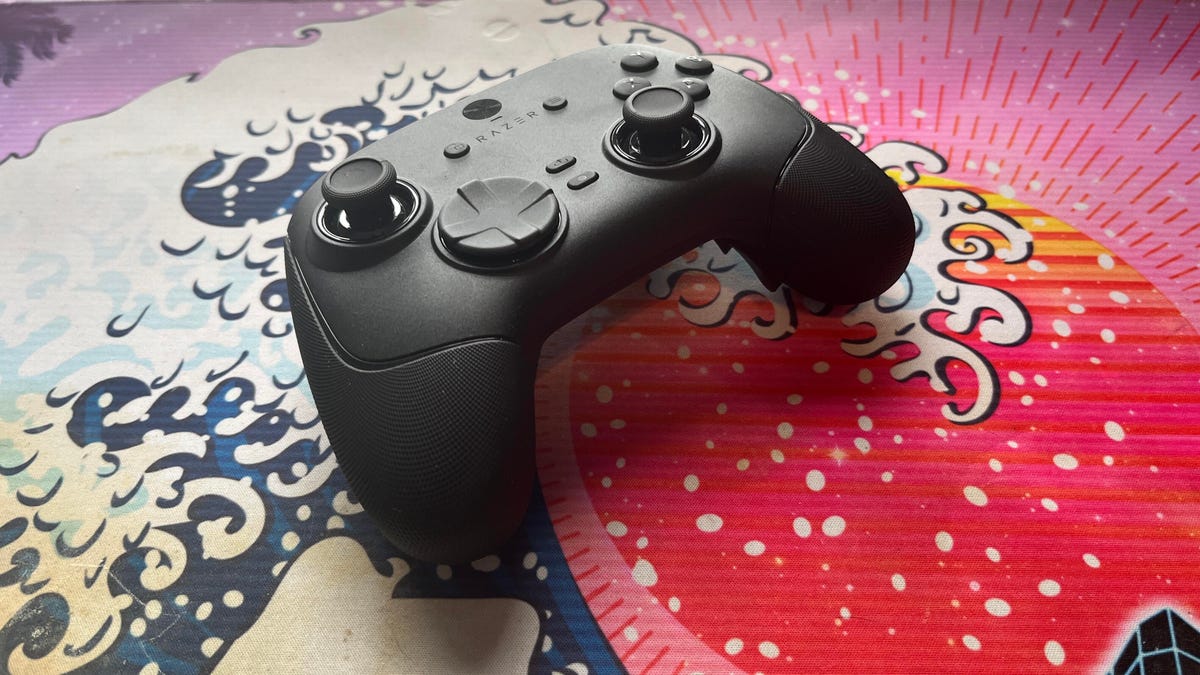
The Razer Wolverine V3 Pro 8K PC controller was not built for me, but admittedly, this has more to do with me as a gamer than the controller itself. I grew up playing the PlayStation 3 and PS4 consoles, cutting my teeth on slim, compact DualSense controllers. Over the past five years, I’ve gamed exclusively on my PC and have grown accustomed to the increased precision of a mouse and keyboard.
The Razer Wolverine V3 Pro 8K PC controller is the antithesis of a DualSense controller. It’s a chunky piece of hardware that might feel natural if you were raised on an Xbox and its bulky controllers, but it took me multiple gaming sessions to get acclimated to the sheer size of the Wolverine V3 and how it fit into my hands, especially since I don’t use a claw grip.
Size aside, this is a PC controller with every bell and whistle you can think of — and its price of $200 reflects that. The 8,000Hz polling rate ensures buttery smooth inputs with no lag, and tunnel magnetoresistance joysticks make every in-game movement feel fluid and calculated. Six extra remappable buttons help you up your game — they’re super handy for hero shooters like Marvel Rivals and hectic games like Battlefield 6. This is a premium product for gamers who are hoarding some serious hardware.
Its price is in line with other premium controllers. One of CNET’s best Xbox controllers is the Wolverine V3 Pro for Xbox, which also costs $200. Similar controllers like the Scuf Instinct Pro and Vitrix Pro BFG are in the same ballpark, pricewise, but the Wolverine V3 Pro 8K PC has a winning combination of competitive variables that make it feel exceptionally easy to use.
This controller is chock full of top-of-the-line technology and feels satisfying to use, but it needs to clear a high bar to feel truly worthwhile as a dedicated PC controller.
Chunky controller, satisfying feedback
When CNET’s Josh Goldman reviewed the Wolverine V3 Pro Xbox wireless controller, he called it «just about perfect.» If it isn’t broken, don’t fix it: Razer replicated many of its successes with the Wolverine V3 Pro PC controller.
The Wolverine V3 Pro 8K PC is the same size as the Wolverine V3 Pro Xbox controller, which is to say it’s a bit chunkier than a standard Xbox wireless controller, but it’s surprisingly much lighter than its Xbox cousin. It weighs just 220 grams, which is appreciably lighter than the Xbox version that weighs 304 grams. And while the Wolverine V3 Pro 8K PC is nowhere near as slim as a DualSense controller, it’s still much lighter than its Sony competitor — a stock DualSense controller weighs 280 grams.
Every button on this controller has a crisp, clean clickiness that scratches the same mental itch that a good mechanical keyboard might. Whether you’re gripping the trigger, pressing a button or squeezing one of the four remappable back paddles, you’ll hear incredibly satisfying auditory feedback that leaves no doubt that the controller is receiving your inputs. At one point, while I sat through a particularly long matchmaking queue, I found myself squeezing the triggers to entertain myself — the snappy pops were enough to keep me off TikTok.
The biggest difference between the V3 Pro Xbox and V3 Pro PC controllers is the variable polling rate — that dictates how often your controller is communicating with the computer. It’s like a refresh rate for your crosshair positioning.
The Wolverine V3 Pro Xbox just can’t compete here: That controller has a wired 1,000Hz polling rate for PC gameplay. The V3 Pro PC controller can be toggled for multiple polling rates, with an 8,000Hz maximum setting. This means the PC controller can report your input data eight times faster than the Xbox controller.
Every movement, turn and button press feels incredibly fluid. It’s safe to say that there’s no input lag with the Wolverine V3 PC controller, but I don’t think it matters too much for moment-to-moment first-person shooter gameplay. If you’re driving a car (or a tank) and you need to stop on a hairpin, you might appreciate Razer’s HyperPolling technology. If you’re not playing a tactical shooter like Counter-Strike or Rainbow Six: Siege, that 8,000Hz polling rate is overkill — if you’re a casual gamer crushing Call of Duty public lobbies with your pals, you’re probably not going to notice it in any of your firefights.
Better than a mouse and keyboard? That’s a little more complicated
I tested out the Wolverine V3 Pro 8K PC controller on Marvel Rivals, ARC Raiders and Battlefield 6 (my current first-person shooter obsession). It’s an extremely solid choice for at least two of these games, and I likely won’t be using my DualSense controller anytime soon.
I had a great time firing magic bolts in Marvel Rivals and rolling tanks through the streets of Cairo in Battlefield 6, but this is a controller that was supposedly designed for high-level shooter gameplay. I’m saddened to report that, when it comes to dominating a first-person shooter match or competing to survive in an extraction shooter, I’d much rather stick to a mouse and keyboard.
In close-range battles, I didn’t feel like the Wolverine controller particularly helped me gain an advantage over my opponents. Mouse-and-keyboard players were often able to lock onto me quicker, even with a high look sensitivity and built-in aim assist. And I felt outmaneuvered and outgunned by mouse-and-keyboard players in the fastest-paced fights. But the controller’s precision TMR thumbsticks made it easy to quickly lock my crosshairs onto enemies and mow them down from afar with light machine guns or sniper rifles in long-range battles.
I also find it useful for games like Battlefield that have a lot of buttons to micromanage during moment-to-moment gameplay. If you want to swap your fire mode from automatic to single-fire, mount your weapon’s bipod against a flat surface or pull out an invaluable class gadget, you’ll be reaching across your keyboard to do so. The six remappable buttons on the Wolverine V3 Pro 8K PC are great for these situations; I loved that I could tap fire my hulking light machine gun by gripping one of the controller’s back paddles.
The controller really shone for vehicle combat, though. I found myself gravitating toward my mouse and keyboard for infantry gunplay, but anytime I’d jump into a tank, I’d reach across my desk and grab the Wolverine again. Having pressure-sensitive triggers helps with any in-game driving: A slight squeeze lets me cautiously move forward, scanning for enemy mines, while fully pulling the trigger down helps me speed out of dangerous situations. Rebinding automatic repair jobs and weapon switches to the back paddles also helped me focus more on in-game combat, which helped me keep my armored vehicles in the fight for longer. With my DualSense controller, I’d have to awkwardly fumble with the D-Pad to activate my vehicle abilities. The Wolverine controller is the definitive way for a Battlefield tank enthusiast to play.
Outside of standard first-person shooter gameplay, I also found the Wolverine V3 PC controller to be handy for hero shooters — with some caveats. When I play Marvel Rivals, I mainly play tanks that require an extensive amount of ability usage but very little aim. Characters like Doctor Strange thrive when you can quickly string inputs together, and rebinding the controls to the Wolverine’s back paddles is great for that.
On the other hand, speedy divers that need to jump in and out of the enemy team’s backline and aim-intensive snipers feel tougher to play with the Wolverine controls, and I’d swap back to my mouse and keyboard whenever I wanted to switch off tank characters and fulfill another role for my team.
One game I don’t recommend the Wolverine V3 Pro PC for is ARC Raiders. While the remappable buttons make it easy to reach for healing items and grenades, losing out on the precision aim of a mouse and keyboard just isn’t worth it in a game where one death can set your progress back by several real-life hours. The controller lets me hold my own against killer ARC robots, but once real players join the mix, I’d rather use my tried-and-true PC hardware setup.
That’s not to say that the Wolverine controller is terrible for a tactical third-person shooter: The back paddles are a great way to quickly access any healing items, grenades and other consumables you’re carrying, which could be the difference between life and death. But when I have teammates depending on me to help them escape with their hard-earned loot, I just don’t trust the Wolverine controller to help me aim better than I can with my trusty mouse and keyboard.
For playing first-person shooters like Call of Duty or Apex Legends at breakneck speeds, the Wolverine V3 Pro 8K PC likely won’t replace your mouse and keyboard. But if your ideal competitive game centers on slower gunplay and long-range firefights, this is the most precise controller I’ve ever laid hands on (and you’ll receive a healthy heaping of help from aim assist to boot).
For the games I like to play, the Wolverine V3 Pro PC controller hasn’t become my primary gaming peripheral. Instead, it’s become a great situational swapout that complements my mouse and keyboard. As much as I like keeping it on deck for a long gaming session, $200 is a high price for a part-time controller.
Technologies
The Most Exciting Video Game Rumors and Leaks Ahead of 2026
Technologies
Today’s NYT Mini Crossword Answers for Wednesday, Dec. 17
Here are the answers for The New York Times Mini Crossword for Dec. 17.

Looking for the most recent Mini Crossword answer? Click here for today’s Mini Crossword hints, as well as our daily answers and hints for The New York Times Wordle, Strands, Connections and Connections: Sports Edition puzzles.
Need some help with today’s Mini Crossword? Read on. And if you could use some hints and guidance for daily solving, check out our Mini Crossword tips.
If you’re looking for today’s Wordle, Connections, Connections: Sports Edition and Strands answers, you can visit CNET’s NYT puzzle hints page.
Read more: Tips and Tricks for Solving The New York Times Mini Crossword
Let’s get to those Mini Crossword clues and answers.
Mini across clues and answers
1A clue: Nod (off)
Answer: DOZE
5A clue: Naval submarine in W.W. II
Answer: UBOAT
7A clue: Tricky thing to do on a busy highway
Answer: MERGE
8A clue: Heat-resistant glassware for cooking
Answer: PYREX
9A clue: Put into groups
Answer: SORT
Mini down clues and answers
1D clue: Break up with
Answer: DUMP
2D clue: Falls in line, so to speak
Answer: OBEYS
3D clue: Legendary vigilante who cuts a «Z» with his sword
Answer: ZORRO
4D clue: Rarin’ to go
Answer: EAGER
6D clue: Common reminder for an upcoming appointment
Answer: TEXT
Don’t miss any of our unbiased tech content and lab-based reviews. Add CNET as a preferred Google source.
-

 Technologies3 года ago
Technologies3 года agoTech Companies Need to Be Held Accountable for Security, Experts Say
-

 Technologies3 года ago
Technologies3 года agoBest Handheld Game Console in 2023
-

 Technologies3 года ago
Technologies3 года agoTighten Up Your VR Game With the Best Head Straps for Quest 2
-

 Technologies4 года ago
Technologies4 года agoBlack Friday 2021: The best deals on TVs, headphones, kitchenware, and more
-

 Technologies4 года ago
Technologies4 года agoVerum, Wickr and Threema: next generation secured messengers
-

 Technologies4 года ago
Technologies4 года agoGoogle to require vaccinations as Silicon Valley rethinks return-to-office policies
-

 Technologies4 года ago
Technologies4 года agoOlivia Harlan Dekker for Verum Messenger
-

 Technologies4 года ago
Technologies4 года agoiPhone 13 event: How to watch Apple’s big announcement tomorrow

